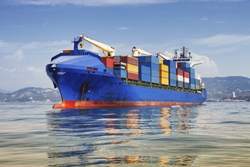Energy-efficient greener ships
The EU-funded project 'Green retrofitting through improved propulsion'(GRIP) was initiated to reduce average industry fuel consumption by 5 % (with individual ships up to 10%). This would be achieved byretrofitting energy-saving devices (ESDs) to existing ships that will reduce CO2 emissions through fuel savings. It brings together world-class hydrodynamic institutes, propeller designers, a European ship operator and a European shipyard, a yard association and a classification society. GRIP will provide insight into detailed ESD design requirements and proceduresthrough unprecedented analysis of the interaction between hull and propeller and the structural integrity of the ESD. Scientists will deliver a tool that enables ship owners to investigate potential energy savings and costs of retrofitting an ESD on any ship, thus, selecting the appropriate device for their service. Three groups of ESDs are being evaluated being the preswirl device, the postswirl device and the hub loss recovery device. In response to a lack of reliable performance data, the team is populating a database of available information for later use by this project and others. Scientists have already begun work on the cost model to determine potential revenues associated with an investment. In addition, they have carefully selected models to be used in flow analysis and ESD design. A specific ESD has been selected for structural analysis and scientists are currentlyinvestigating load definition, including motion-induced vibration.In addition, researchers have selected the reference vessel and the fully automated procedure for ESD optimisation has been successfully demonstrated. Finally, the team has made excellent progress in defining validation trials. In the next period, the consortium will finalise the simulation toolkit representing the retrofit process. Completion of project objectives is expected to significantly reduce CO2 emissions by the international shipping industry through the use of expertly characterised and selected ESDs.

